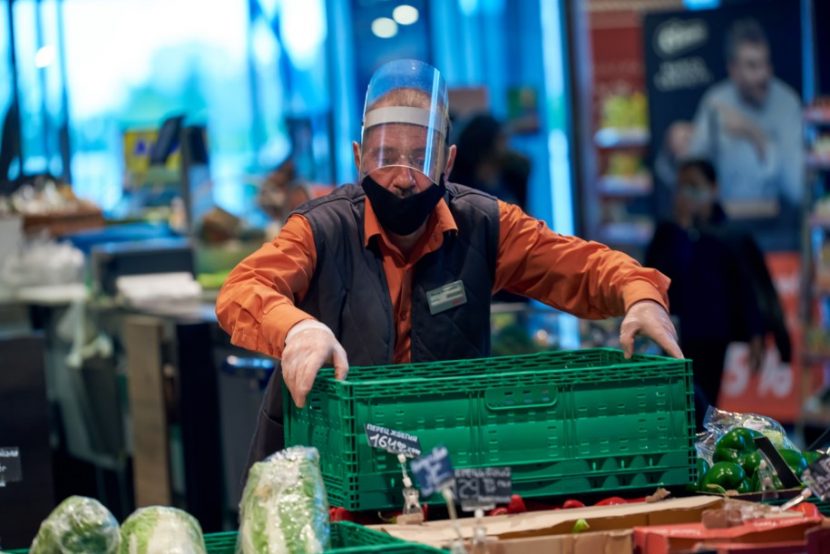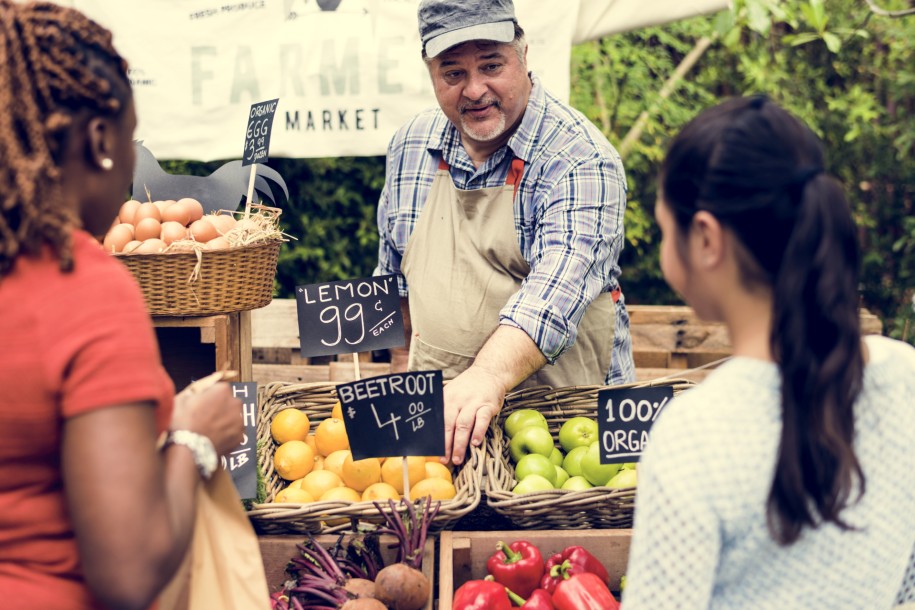How to Manage Risks in the Food Industry Post-COVID-19
By Brita Ball
The pandemic has led to thousands of essential food workers becoming ill or asymptomatic carriers of the virus. Many have spread the virus to their loved ones. Hundreds of people with connections to the food industry have died from COVID-19 or complications from associated co-morbidities.
Meat processing plants have been hit hard. Companies have been forced to retool, and shut down temporarily to stop the virus from spreading among their employees, disrupting the food supply. Farms have similarly been affected due to tight working and living conditions. Grocery stores that have stayed open have reduced customer access and adjusted operations, some shifting their efforts to online storefronts. Restaurants have closed or modified their menus and systems to provide takeout options when there previously were none. Even food inspection agencies have altered their approaches in order to reduce risk to their employees. While much of the emphasis in workplaces recently has been on reducing health risk among employees, it is equally important to foster and maintain a strong, positive food safety culture to protect the food supply.
We cannot yet tell whether SARS-CoV-2 will be contained or eradicated, or become another endemic virus. In the meantime, we can learn from the current situation about managing risks and be better prepared for post-pandemic times in the food industry.
That’s because the skills required for assessing and managing food safety risk are similar to those needed for the current pandemic
Examples Worth Noting
Companies that decided COVID-19 was a real threat to their operations took action to mitigate the risk to the business and to employee health and safety. Those with leadership that discounted the invisible coronavirus risk were slower to react. Strategic thinking and discussions about risk management have helped firms be prepared for and address issues in their supply chains and workforces. Elevating food safety, as well as workers’ health and safety, to the boardroom has shown their importance and acknowledged the impact that associated risks can have on a business.
Organizations doing a good job of managing the COVID-19 crisis have had their food safety leaders working with human resources, health and safety, and/or risk management personnel. That’s because the skills required for assessing and managing food safety risk are similar to those needed for the current pandemic. The coronavirus may have forced collaboration and multidisciplinary teams but it’s important to note that continuing to work together to address common concerns can provide long term benefit and strengthen cultures. And, when an invisible threat like the coronavirus is acknowledged and managed, it becomes easier for food safety professionals to explain food safety risk.
The coronavirus threat to employee health has given senior management good reason to require managers and supervisors to communicate with their subordinates and take action to mitigate the risk. It has also given the opportunity to involve management and others in taking ownership in dealing with a problem. Like the invisible risk of coronavirus, food safety risk cannot be cannot be managed by a few people. Increased appropriate communication and engagement throughout an organization contribute to improved safety and food safety outcomes and can ultimately lead to improved food safety culture.
Effective training and supervision or management are essential to ensuring desired behaviours are followed at all levels and in all departments. While the act of enforcing proper hand washing and mask wearing to prevent spread of COVID-19 takes the focus off food safety, new habits are being formed that support culture change. Maintaining an appropriate level of reinforcement for food safety related behaviours will be needed while the culture matures.
Until an effective vaccine is widely adopted or SARS-CoV-2 is under control, the food industry will have to continue dealing with associated risks to business. And, as food safety culture is incorporated into updated food safety system standards and government regulations, business leaders can use the time to plan, shift their cultures and better prepare for the future.
About the Author:
Brita Ball, PhD, CTDP, supports food businesses wanting to improve their culture of food safety, training and bottom line. She is a food safety and training specialist, principal consultant at Brita Ball & Associates, Chair of the Food Safety Education professional development group for the International Association for Food Protection, and Faculty Advisor for students in Michigan State University’s online MS in food safety. Brita is a regular contributor and an Industry Advisor to Global Food Safety Resource.

-
 FeaturedRisk management
The Cost of a Breach: What a Cyberattack Could Mean for Food Safety Recalls
FeaturedRisk management
The Cost of a Breach: What a Cyberattack Could Mean for Food Safety Recalls
-
 FeaturedRisk management
Securing the Food Chain: How ISO/IEC 27001 Strengthens Cybersecurity
FeaturedRisk management
Securing the Food Chain: How ISO/IEC 27001 Strengthens Cybersecurity
-
 FeaturedRisk management
Revolutionizing Food Safety Training: Breaking Out of the “Check-the-Box” Mentality
FeaturedRisk management
Revolutionizing Food Safety Training: Breaking Out of the “Check-the-Box” Mentality
-
 GFSI Standards
GFSI 2025: Building Trust, Tech-Forward Solutions, and Global Unity in Food Safety
GFSI Standards
GFSI 2025: Building Trust, Tech-Forward Solutions, and Global Unity in Food Safety
-
 FeaturedFood Safety
Integrated Pest Management: Strategies to Protect Your Brand’s Reputation
FeaturedFood Safety
Integrated Pest Management: Strategies to Protect Your Brand’s Reputation
-
 FeaturedFood Safety Culture & Training
No Open Door Policy: Challenges That Impact Pest Control in Food Processing Plants
FeaturedFood Safety Culture & Training
No Open Door Policy: Challenges That Impact Pest Control in Food Processing Plants




